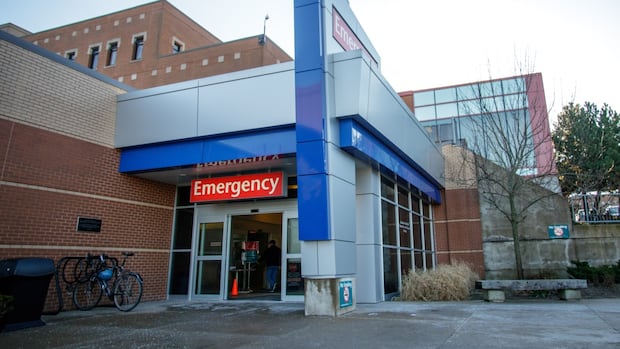Nova Scotia·NewThe rate exceeds the national average, according to a new report from the Montreal Economic Institute.Health minister says efforts are being made to help address the issueMichael Gorman · CBC News · Posted: Sep 18, 2025 4:33 PM EDT | Last Updated: 1 hour agoA report from the Montreal Economic Institute says almost half of the people who left ERs without being seen had a triage score of 3, which is considered urgent or a state that could potentially worsen to the point of requiring emergency intervention. (Robert Short/CBC)Almost 10 per cent of the patients who visited an emergency department in Nova Scotia last year left without being treated, a rate that exceeds the national average, according to a new report from the Montreal Economic Institute.Nova Scotia’s figure, which has hovered around the same level for three years, is higher than the national average of 7.8 per cent.Renaud Brossard, vice-president of communications for the institute, said what’s notable about the Nova Scotia result is that almost half of the people leaving emergency departments in frustration over long waits have a triage score of three, which is considered urgent or a state that could potentially worsen to the point of requiring emergency intervention.”This creates a situation where their problems worsen and they’re forced to go back, but with a risk of complications, which then puts additional pressure on our health-care system if not just for the fact that their conditions are getting worse,” Brossard said in an interview.The report makes three recommendations to help bring down the walkaway rate in emergency departments across Canada: increase the use of specialized nurse practitioner clinics, grant the broadest scope of practice to pharmacists, and allow for the creation of non-governmental immediate care centres.While Nova Scotia has been using more nurse practitioners at collaborative care clinics and in emergency departments, and primary care pharmacy clinics have created an alternative option for some patients, the immediate care centres would be something new.Addressing less urgent casesBrossard said the concept is based on a model in France where sites are owned and managed by doctors who focus on cases that would get triage scores of three, four or five. On the triage scale of one through five, those are considered less urgent cases that do not require emergency intervention. “We’re talking about maybe urgent things such as a broken bone or somebody needing sutures, [but] not somebody that’s in a life-or-death scenario,” said Brossard.He said the advantage of the model is that it allows emergency rooms to focus their resources on the most urgent and complex cases. The sites in France provide universal access, with providers paid based on the number of patients they treat and in line with fees doctors working in hospitals seeing similar patients would receive.Michelle Thompson is Nova Scotia’s health minister. (Robert Short/CBC)Health Minister Michelle Thompson said there will always be some patients who leave emergency departments out of frustration for how long they’re waiting, but she believes measures introduced by her government will help.That includes the expansion of primary care options, but also expanded services in emergency departments so people waiting have initial access to tests or assessments before finally getting to see a doctor. The province has also introduced virtual care options in some emergency departments.”We’ve spent a great deal of money and time and effort to try and improve that,” Thompson told reporters following a cabinet meeting in Halifax on Thursday.”We continue to look at ways that we can support people.”ABOUT THE AUTHORMichael Gorman covers the Nova Scotia legislature for CBC, with additional focuses on health care and rural communities. Contact him with story ideas at michael.gorman@cbc.ca
About 10 per cent of patients at Nova Scotia ERs left last year due to long wait times











